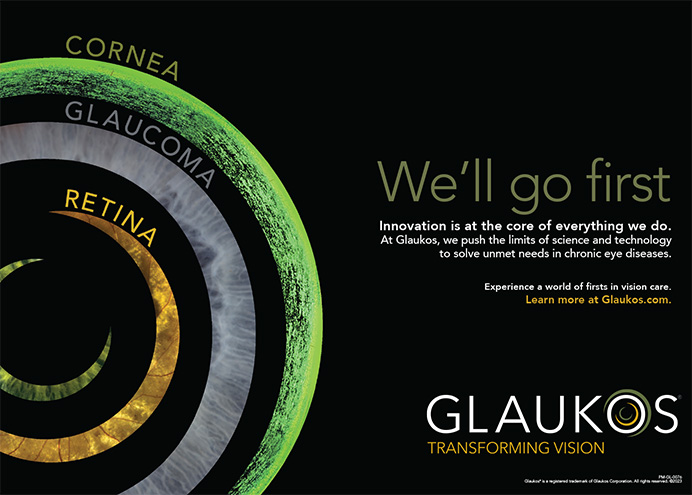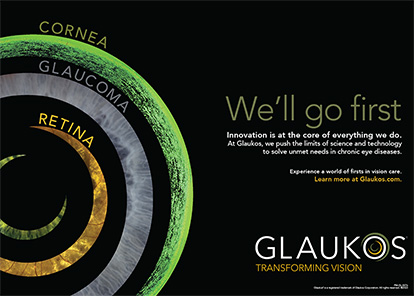The CrystaLens model AT-45 (C&C Vision, Aliso Viejo, CA) is a modified plate haptic IOL designed to offer patients accommodation in an implant. It is made of biosil silicone material, with polyimide loops, and is only suitable for in-the-bag placement. More than 900 of these lenses have been implanted worldwide.
The AT-45 is a foldable optic, however, we used it without folding within the FDA study. Unfolded, it fits through a 3.6-mm to 3.9-mm incision. Although I have not folded any of the lenses to date, there have been a few implanted while folded in the international arena. Michael Colvard, MD, and Roberto Zaldivar, MD, have successfully injected the lens with the STAAR injector system (STAAR Surgical, Monrovia, CA).
Accommodative Action
Many surgeons are under the impression that the accommodative action of the lens occurs when the ciliary muscle pushes on the haptic, but that is not what happens at all. In fact, the ciliary muscle contracts and presses on the vitreous base, which causes the central vitreous to herniate forward toward the cornea, pushing the optic toward the cornea.
Design Improvements
The addition of the polyimide haptics, which extend from the plate haptic, has apparently solved the problem of implant dislocation. There were some late dislocations of the implant in earlier designs of the lens that did not have this haptic, however, no dislocations have been seen with the current design.
Comparisons
The Array lens (Allergan Surgical, Inc., Irvine, CA) is an example of an alternative technology to the AT-45. My concern with the Array is that many patients who have this lens implanted complain of unwanted images and difficulty with night vision. I think it is fair to say that patient selection is extremely important with the Array lens, and that in my experience, there are patients who cannot be identified preoperatively who do not accept the Array well. Surgeons must implant the lens to see if a patient will tolerate it or not, which is not a very practical way of handling patients. I believe that the concentric zones of near and far vision in this lens are the reason that patients complain of unwanted images; I hardly use the Array because of this problem.
Results that improve with time
The inclusion criteria for the study required that patients be 50 years or older, that they have an intact capsulorhexis, have less than 1 D of astigmatism, and have the potential to demonstrate at least 20/30 visual acuity after surgery. The study's postoperative UCVA average was 20/22.
For distance-corrected near vision, 51% of the patients were J1 or better and 75% were J2 or better monocularly. Binocularly, 67% were J1 or better and 82% were J2 or better. All of the patients could see 20/20 at distance and J1 at intermediate (32 inches). Eighty-three percent could also see J1 at near, and the remaining patients were J2.
When we studied how the patients' accommodation changed over time, we found that it tended to improve. In other words, the patients required less add at 3 months to see J1 than they did at 1 month. Although I have some hypotheses as to why the improvement occurred, my colleagues and I have not yet come to a conclusive answer.
In summary, the study produced good visual results at distance, intermediate, and near vision. We had excellent results with monocular implantation, and enhanced visual results with bilateral implantation. The study produced high patient satisfaction, and the accommodative results seemed to improve with time.
Steven J. Dell, MD, is Director, Refractive and Corneal Surgery at Texan Eye Care in Austin, Texas. Dr. Dell may be reached at (512) 327-7000; sdell@austin.rr.com

